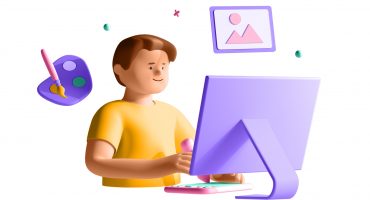
Outline:
- Introduction to Blender 2D Animation
- What is Blender?
- Overview of Blender software
- Blender’s animation capabilities
- Understanding 2D Animation
- Definition and purpose of 2D animation
- Advantages of 2D animation in various industries
- Getting Started with Blender 2D Animation
- Installing Blender and setting up the workspace
- Introduction to the Blender interface
- Creating Your First 2D Animation in Blender
- Importing assets and creating a new project
- Utilizing keyframes and animation curves
- Adding effects and transitions
- Mastering Animation Techniques in Blender
- Exploring different animation styles and principles
- Tips for creating smooth and appealing animations
- Using the graph editor for precise control
- Advanced Features in Blender for 2D Animation
- Understanding rigging and skeletal animation
- Working with particle systems and physics simulations
- Integrating Audio in Blender Animations
- Adding sound effects and background music
- Syncing animations with audio cues
- Exporting and Sharing Your 2D Animations
- Saving and exporting animation files
- Sharing animations on various platforms
- Blender 2D Animation Tips and Tricks
- Optimizing workflow and productivity
- Troubleshooting common animation issues
- Conclusion
Blender, an open-source 3D computer graphics software, is renowned for its 3D animation capabilities. However, it’s not limited to just three dimensions. In this article, we’ll dive into the captivating world of Blender 2D animation, where artistic expressions and storytelling come to life with the power of technology.
1. Introduction to Blender 2D Animation
Blender 2D animation is a branch of animation that utilizes the Blender software to create captivating motion pictures, explainer videos, character animations, and much more. While 3D animation is widely known, 2D animation holds its own charm and is commonly employed in various industries like gaming, advertising, education, and entertainment.
2. What is Blender?
Overview of Blender software
Blender is a free, open-source 3D creation suite that boasts an impressive array of tools for modeling, sculpting, texturing, and animating 3D objects. Initially developed in 1994, Blender has evolved into a versatile platform used by professionals and hobbyists alike.
Blender’s animation capabilities
In addition to its 3D prowess, Blender offers a powerful set of tools for 2D animation. With its intuitive interface and extensive feature set, Blender enables artists to unleash their creativity and bring their ideas to life.
3. Understanding 2D Animation
Definition and purpose of 2D animation
2D animation is a traditional animation technique where characters, backgrounds, and elements are created and animated in a two-dimensional space. It has been a cornerstone of animation since the early days of cinema and continues to be widely used due to its simplicity and versatility.
Advantages of 2D animation in various industries
From classic hand-drawn animation to modern digital techniques, 2D animation remains popular due to its ability to convey emotions, tell stories, and simplify complex concepts. It finds applications in education, marketing, entertainment, and more.
4. Getting Started with Blender 2D Animation
Installing Blender and setting up the workspace
Before diving into the world of 2D animation in Blender, it’s essential to have the software installed on your system. Blender is compatible with various operating systems and can be easily downloaded from its official website.
Introduction to the Blender interface
Blender’s interface might seem overwhelming at first glance, but it provides a host of powerful features for animators. Understanding the layout and tools is crucial to maximizing productivity.
5. Creating Your First 2D Animation in Blender
Importing assets and creating a new project
To start animating in Blender, you’ll need the necessary assets. Whether it’s characters, props, or backgrounds, importing them into your project is the first step to set the stage for your animation.
Utilizing keyframes and animation curves
Keyframes serve as the building blocks of animation in Blender. By defining key poses at specific points in time and creating smooth animation curves, you can achieve seamless motion.
Adding effects and transitions
Blender provides a range of effects and transitions to enhance your animations further. From simple fades to complex particle effects, the possibilities are vast.
6. Mastering Animation Techniques in Blender
Exploring different animation styles and principles
Animation is an art form with various styles, each offering a unique visual appeal. Understanding the principles of animation, such as squash and stretch, anticipation, and timing, is essential to elevate your work.
Tips for creating smooth and appealing animations
Achieving fluid and eye-catching animations requires attention to detail. Mastering techniques like easing, secondary motion, and follow-through can significantly enhance the quality of your work.
Using the graph editor for precise control
Blender’s graph editor allows animators to fine-tune animation curves and achieve precise control over their animations. Learning to use this tool effectively will open up new creative possibilities.
7. Advanced Features in Blender for 2D Animation
Understanding rigging and skeletal animation
Rigging enables you to create a digital skeleton for your characters, making them flexible and easy to animate. Blender offers robust rigging tools that simplify the animation process.
Working with particle systems and physics simulations
Particle systems allow you to simulate complex phenomena such as fire, smoke, and water. By combining these effects with your animations, you can add a touch of realism and magic to your creations.
8. Integrating Audio in Blender Animations
Adding sound effects and background music
Audio plays a vital role in animation, as it enhances the viewer’s experience and helps convey emotions. Blender allows you to import audio and sync it with your animations seamlessly.
Syncing animations with audio cues
Matching your animation to specific audio cues, like dialogue or music beats, can create a powerful impact and make your animations more engaging.
9. Exporting and Sharing Your 2D Animations
Saving and exporting animation files
Once your masterpiece is complete, you’ll want to save it in a suitable format for sharing or further editing. Blender supports various file formats for exporting your animations.
Sharing animations on various platforms
The internet provides an extensive platform for showcasing your animations. Whether it’s social media, video-sharing websites, or your personal portfolio, getting your work out there is essential to gain recognition and feedback.
10. Blender 2D Animation Tips and Tricks
Optimizing workflow and productivity
As with any creative endeavor, efficiency is key. Learn valuable tips and tricks to streamline your workflow and make the most of your time in Blender.
Troubleshooting common animation issues
Animation projects often come with challenges. Understanding common issues and how to overcome them will save you time and frustration.
11. Conclusion
Blender 2D animation is a captivating and versatile medium for artistic expression. With its vast array of tools, animation techniques, and creative freedom, Blender empowers artists to bring their imagination to life.
Unlock your animation potential with Blender 2D animation, and let your creativity soar to new heights!
Learn 3D Animation in 2023: A Comprehensive Guide to Mastering the Art
2D vs. 3D Animation: Choosing the Perfect Animation Style for Your Project
FAQs
- Can I use Blender for 2D animation if I’m new to the software? Absolutely! While Blender may seem complex, it offers plenty of tutorials and a helpful community to support beginners.
- Is Blender 2D animation suitable for professional projects? Yes, many professionals and studios utilize Blender for 2D animation due to its powerful capabilities and cost-effectiveness.
- Does Blender support importing assets from other software? Yes, Blender supports various file formats, allowing you to import assets from other software seamlessly.
- Can I use Blender 2D animation for creating animated advertisements? Certainly! Blender’s animation features are versatile and perfect for creating engaging advertisements.
- Is Blender compatible with Windows, macOS, and Linux? Yes, Blender is cross-platform and works on Windows, macOS, and Linux systems.


















Leave a Comment